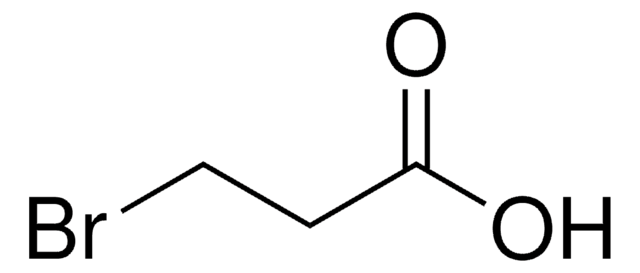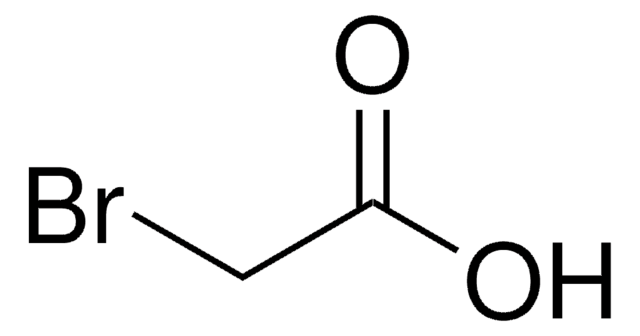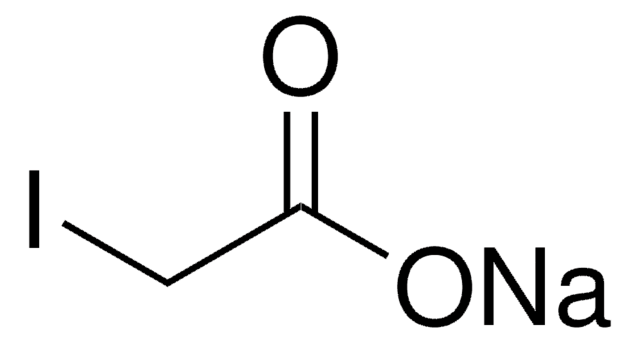291773
Sodium chloroacetate
98%
Sinónimos:
Chloroacetic acid sodium salt
About This Item
Productos recomendados
assay
98%
form
powder or chunks
mp
199 °C (dec.) (lit.)
SMILES string
[Na+].[O-]C(=O)CCl
InChI
1S/C2H3ClO2.Na/c3-1-2(4)5;/h1H2,(H,4,5);/q;+1/p-1
InChI key
FDRCDNZGSXJAFP-UHFFFAOYSA-M
¿Está buscando productos similares? Visita Guía de comparación de productos
Application
- Nano-copper ions assembled cellulose-based composite with antibacterial activity for biodegradable personal protective mask.: This study explores the creation of a nano-copper ions cellulose-based composite, showcasing its potential antibacterial properties and application in biodegradable personal protective masks (Shao et al., 2023).
- Effective extraction of fluoroquinolones from water using facile modified plant fibers.: This article investigates the use of modified plant fibers for the efficient extraction of fluoroquinolones from water, highlighting the utility of sodium chloroacetate in the modification process (Zhang et al., 2022).
- Sodium Chloroacetate Modified Polyethyleneimine/Trimesic Acid Nanofiltration Membrane to Improve Antifouling Performance.: The study details the improvement of antifouling performance in nanofiltration membranes through modification with sodium chloroacetate (Gu et al., 2021).
- Preparation of BiOCl/Bi(2)WO(6) Photocatalyst for Efficient Fixation on Cotton Fabric: Applications in UV Shielding and Self-Cleaning Performances.: This research focuses on the application of a BiOCl/Bi(2)WO(6) photocatalyst in UV shielding and self-cleaning performances on cotton fabric, employing sodium chloroacetate in the preparation process (Chen et al., 2021).
signalword
Danger
hcodes
Hazard Classifications
Acute Tox. 3 Oral - Aquatic Acute 1 - Eye Irrit. 2 - Skin Irrit. 2
Storage Class
6.1D - Non-combustible acute toxic Cat.3 / toxic hazardous materials or hazardous materials causing chronic effects
wgk_germany
WGK 3
flash_point_f
518.0 °F - closed cup
flash_point_c
270 °C - closed cup
Certificados de análisis (COA)
Busque Certificados de análisis (COA) introduciendo el número de lote del producto. Los números de lote se encuentran en la etiqueta del producto después de las palabras «Lot» o «Batch»
¿Ya tiene este producto?
Encuentre la documentación para los productos que ha comprado recientemente en la Biblioteca de documentos.
Los clientes también vieron
Nuestro equipo de científicos tiene experiencia en todas las áreas de investigación: Ciencias de la vida, Ciencia de los materiales, Síntesis química, Cromatografía, Analítica y muchas otras.
Póngase en contacto con el Servicio técnico















